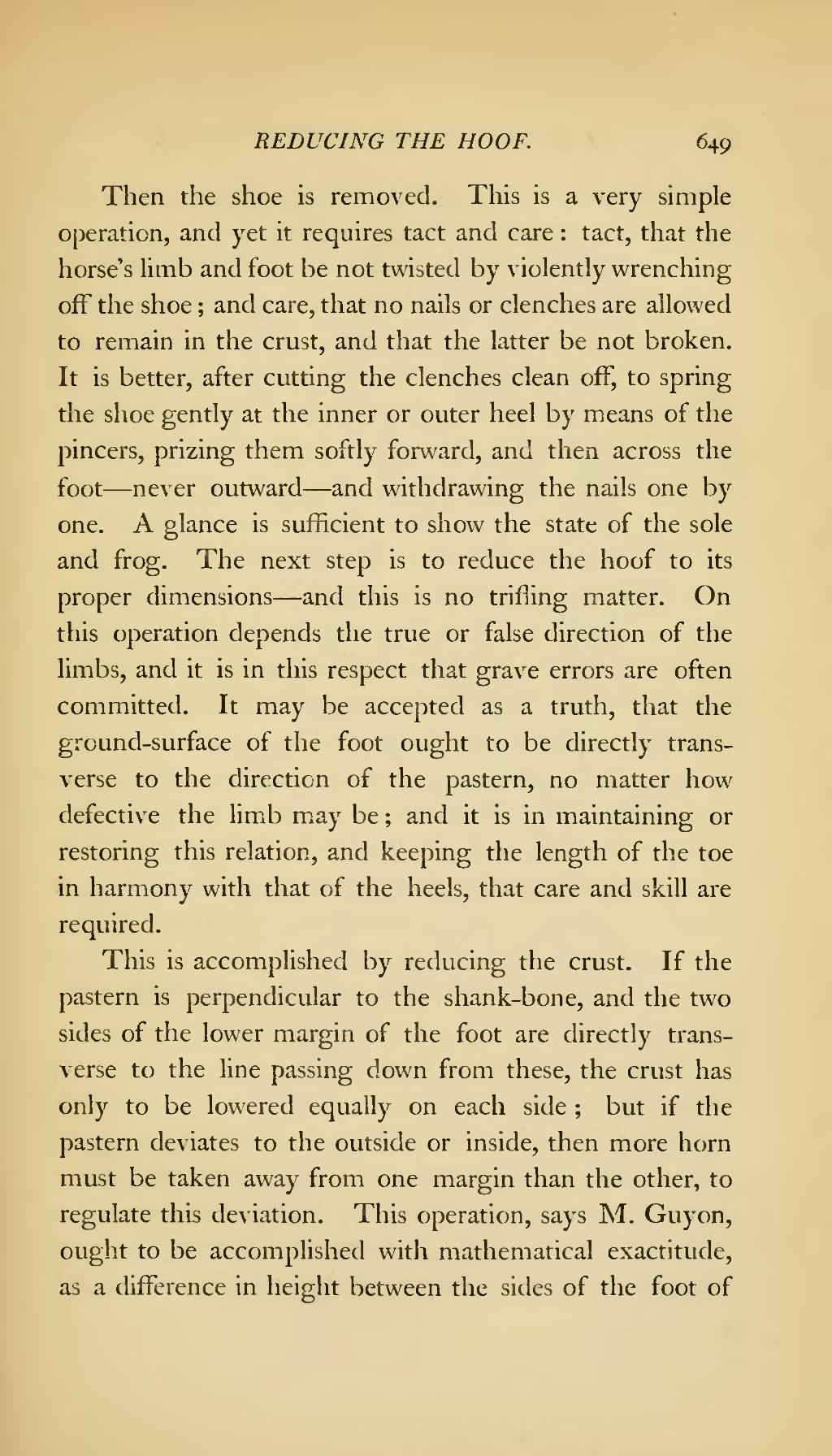Then the shoe is removed. This is a very simple operation, and yet it requires tact and care: tact, that the horse's limb and foot be not twisted by violently wrenching off the shoe; and care, that no nails or clenches are allowed to remain in the crust, and that the latter be not broken. It is better, after cutting the clenches clean off, to spring the shoe gently at the inner or outer heel by means of the pincers, prizing them softly forward, and then across the foot—never outward—and withdrawing the nails one by one. A glance is sufficient to show the state of the sole and frog. The next step is to reduce the hoof to its proper dimensions—and this is no trifling matter. On this operation depends the true or false direction of the limbs, and it is in this respect that grave errors are often committed. It may be accepted as a truth, that the ground-surface of the foot ought to be directly transverse to the direction of the pastern, no matter how defective the limb may be; and it is in maintaining or restoring this relation, and keeping the length of the toe in harmony with that of the heels, that care and skill are required.
This is accomplished by reducing the crust. If the pastern is perpendicular to the shank-bone, and the two sides of the lower margin of the foot are directly transverse to the line passing down from these, the crust has only to be lowered equally on each side; but if the pastern deviates to the outside or inside, then more horn must be taken away from one margin than the other, to regulate this deviation. This operation, says M. Guyon, ought to be accomplished with mathematical exactitude, as a difference in height between the sides of the foot of
